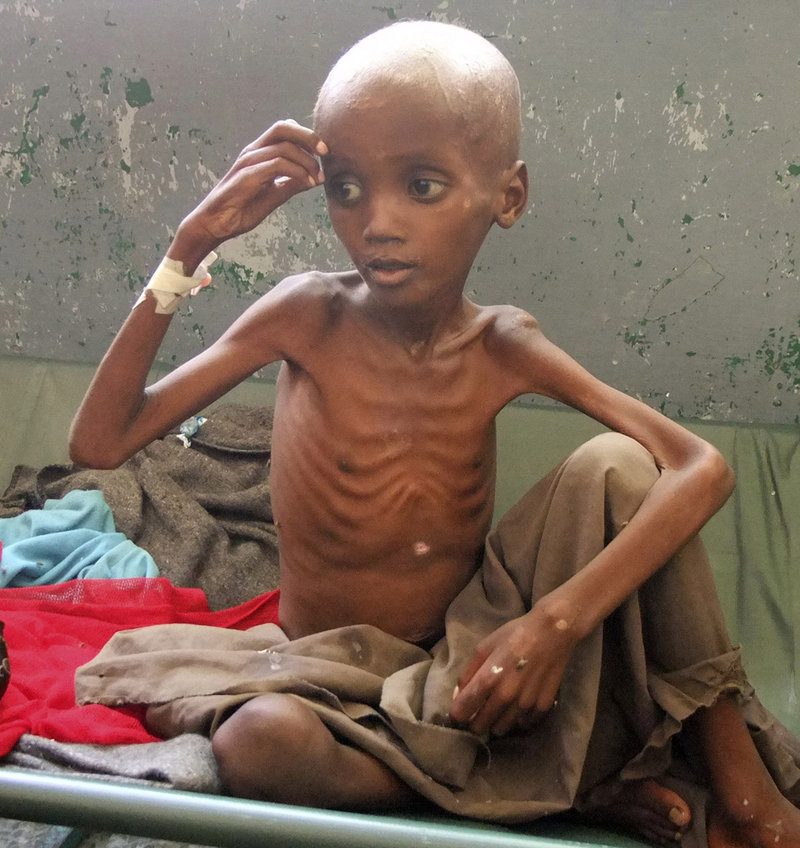MOGADISHU, Somalia — A famine spreading through Somalia is killing more than a hundred children each day, the U.N. said Monday, and warned that hundreds of thousands more people may die in the coming months unless they receive urgent help.
The starvation is mostly taking place out of sight of the world media, in areas of southern Somalia under control of violent Islamist insurgents.
“Hungry people are only waiting for death,” said Nor Anshur, a father of five who lost one of his children in the Bay region, a former agricultural breadbasket that the U.N. declared Somalia’s sixth famine zone on Monday. “We saw our neighbors’ children and elderly people dying every day for lack of food.”
Like tens of thousands of other Somalis, Anshur left his drought-ravaged home and trekked to Somalia’s capital hoping for help. But delivering food is difficult and dangerous. Even in the government-controlled capital of Somalia, where 9,000 African Union peacekeepers are on patrol, organized theft of truckloads of food aid is rife and shootouts at aid distributions are frequent.
Conditions are even worse in areas controlled by the Islamist insurgency, which holds much of southern Somalia. It has forbidden many aid agencies to work in its territory where the famine is most severe.
The latest surveys of the U.N. Food Security and Nutrition Analysis Unit for Somalia found hundreds of people are dying every day from the famine. At least half of them are children. Tens of thousands of Somalis already have died this year due to the severe violence, drought and famine, the U.N. said.
Famine has now affected six areas, including four southern Somali regions and two settlements of internally displaced people.
Few foreign journalists have traveled to insurgent-held areas, so the footage that helped galvanize responses to other mass famines is largely missing. The U.N. has received just under 60 percent of the $1.1 billion it requested to respond to the emergency.
In Somalia’s southern Bay region, nearly 60 percent of people are acutely malnourished – four times the rate for an emergency, said Grainne Moloney, head of the food analysis unit. “I’ve not seen anything like it,” she said.
About 750,000 more people may die from famine in the next four months if there is no adequate response, the U.N. report said, an increase of 66 percent from July.
The strong, like Anshur or Farah Aden, can make it from regions like Bay to centers where there might be foreign food. But Aden said he had left behind many neighbors too weak to travel.
Copy the Story Link
Send questions/comments to the editors.



Success. Please wait for the page to reload. If the page does not reload within 5 seconds, please refresh the page.
Enter your email and password to access comments.
Hi, to comment on stories you must . This profile is in addition to your subscription and website login.
Already have a commenting profile? .
Invalid username/password.
Please check your email to confirm and complete your registration.
Only subscribers are eligible to post comments. Please subscribe or login first for digital access. Here’s why.
Use the form below to reset your password. When you've submitted your account email, we will send an email with a reset code.